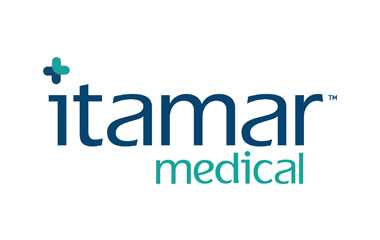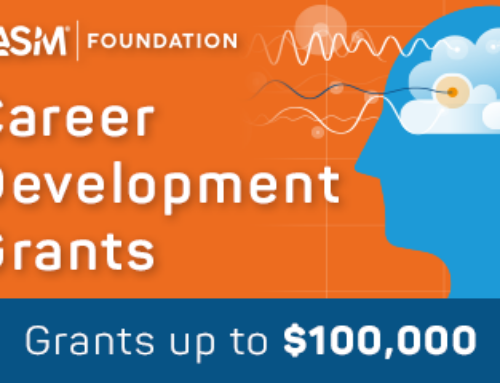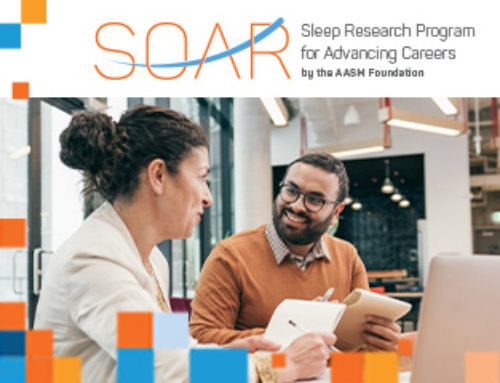The AASM Foundation launched a Corporate Support Program in 2019 to create a new pathway for companies to invest in the sleep medicine community. Itamar Medical supports the AASM Foundation because they are committed to philanthropic support of clinical research and the AASM Foundation’s programs. Itamar Medical provided the following responses to the AASM Foundation’s questions:
Itamar Medical and the AASM Foundation are both focused on creating healthier lives through better sleep. Why is your company so passionate about improving sleep health?
There are an estimated 54 to 60 million patients in the United States believed to suffer from sleep apnea, and approximately 80% of them remain undiagnosed. Unlike its past perception of being a lifestyle disease characterized by snoring and tiredness, today, sleep apnea is known to be a serious, independent and modifiable underlying cardiovascular risk factor and creating an easy and affordable pathway to diagnosis and care for those patients is our mission.
At Itamar we are working hard to find innovative ways to get to those patients and make sure they are cared for effectively. Our mission is to make the sleep apnea diagnosis and, if needed, effective therapy accessible to everyone who is at risk. That is why we are partnering with different organizations, associations, companies, key opinion leaders and the sleep care provider community to move the needle and move it fast.
Why is clinical research so important to Itamar Medical?
Clinical research is important to independently and scientifically validate our technology against the gold standard and, importantly, to do it in a variety of populations. The evidence generated by those research activities and published in esteemed peer-reviewed medical journals create the confidence, both for the providers and payers, that clinical practice is safe and effective. We are fortunate to work with dozens of leading academic research centers across the United States, as well as all around the world.
Itamar Medical has been focused on collaborative-interdisciplinary care since the company’s inception. With a focus on engaging cardiologists and physicians board-certified in sleep medicine, how do you envision additional collaboration between these groups in the future?
There are 92 million cardiovascular patients in the U..S with more than 50% of them estimated to suffer from sleep apnea. Effective sleep apnea management in that patient population can improve overall cardiovascular health and treatment outcomes and lead to reduced morbidity and mortality rates. Yet about85% of those patients remain undiagnosed and untreated.
A few years back, we made it our focus to solve this unfortunate reality and started to center our thinking around the patient journey and make it seamless. It started by connecting to the cardiologists on both the clinical as well as service levels, and offering them solutions like our own WatchPAT® TurnKey program that minimizes the burden on them. Our TurnKey solution reduces the patient journey to a simple ordered prescription. This process enables full transparency of progress and outcomes in the care pathway, and it provides a high level of patient service and satisfaction. Additionally, professional clinical solutions based on digital health platform yield higher than average completion and compliance rates. It is critical to engage sleep care providers as they are instrumental to this process. We were also fortunate to have the leading CPAP manufacturers, ResMed and Philips, support our mission by facilitating compliance data integration to our cloud. We are looking forward to expanding our eco-system partners to help those estimated 46 million sleep apnea patients with CVD co-morbidity.
New technologies are always changing, how do you envision Itamar Medical’s products evolving over the next few years?
We are seeing multiple trends being accelerated due to COVID-19. The implementation of COVID-19 risk mitigation strategies by the sleep centers have accelerated the use of our recently launched fully disposable HSAT by the providers, as well as the use of telemedicine which make diagnostics and therapy more broadly accessible. We believe this trend is permanently changing behaviors and is here to stay. The “real-time” element of those fully disposable devices, in which the study results are available to the providers minutes after the patient wakes up, have proven to shorten time to therapy and potentially improve compliance with therapy.
We are also focusing on integrating more data points to the sleep study without adding complexity and enabling a more rounded evaluation of the patient clinical situation and recommended therapy such as like REM related apnea, central apnea, position apnea, insomnia overlap syndrome and more.






